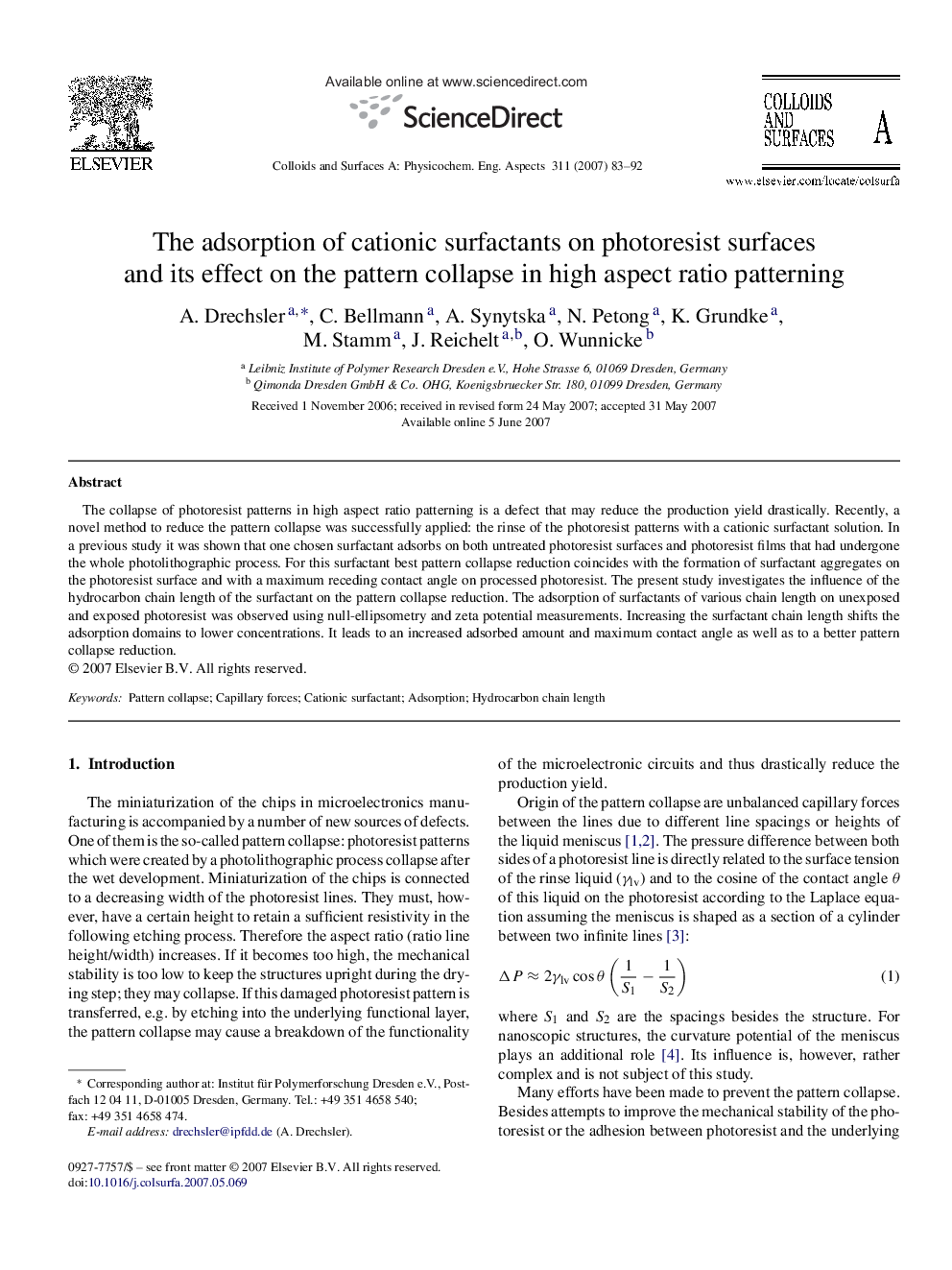| Article ID | Journal | Published Year | Pages | File Type |
|---|---|---|---|---|
| 597191 | Colloids and Surfaces A: Physicochemical and Engineering Aspects | 2007 | 10 Pages |
The collapse of photoresist patterns in high aspect ratio patterning is a defect that may reduce the production yield drastically. Recently, a novel method to reduce the pattern collapse was successfully applied: the rinse of the photoresist patterns with a cationic surfactant solution. In a previous study it was shown that one chosen surfactant adsorbs on both untreated photoresist surfaces and photoresist films that had undergone the whole photolithographic process. For this surfactant best pattern collapse reduction coincides with the formation of surfactant aggregates on the photoresist surface and with a maximum receding contact angle on processed photoresist. The present study investigates the influence of the hydrocarbon chain length of the surfactant on the pattern collapse reduction. The adsorption of surfactants of various chain length on unexposed and exposed photoresist was observed using null-ellipsometry and zeta potential measurements. Increasing the surfactant chain length shifts the adsorption domains to lower concentrations. It leads to an increased adsorbed amount and maximum contact angle as well as to a better pattern collapse reduction.
